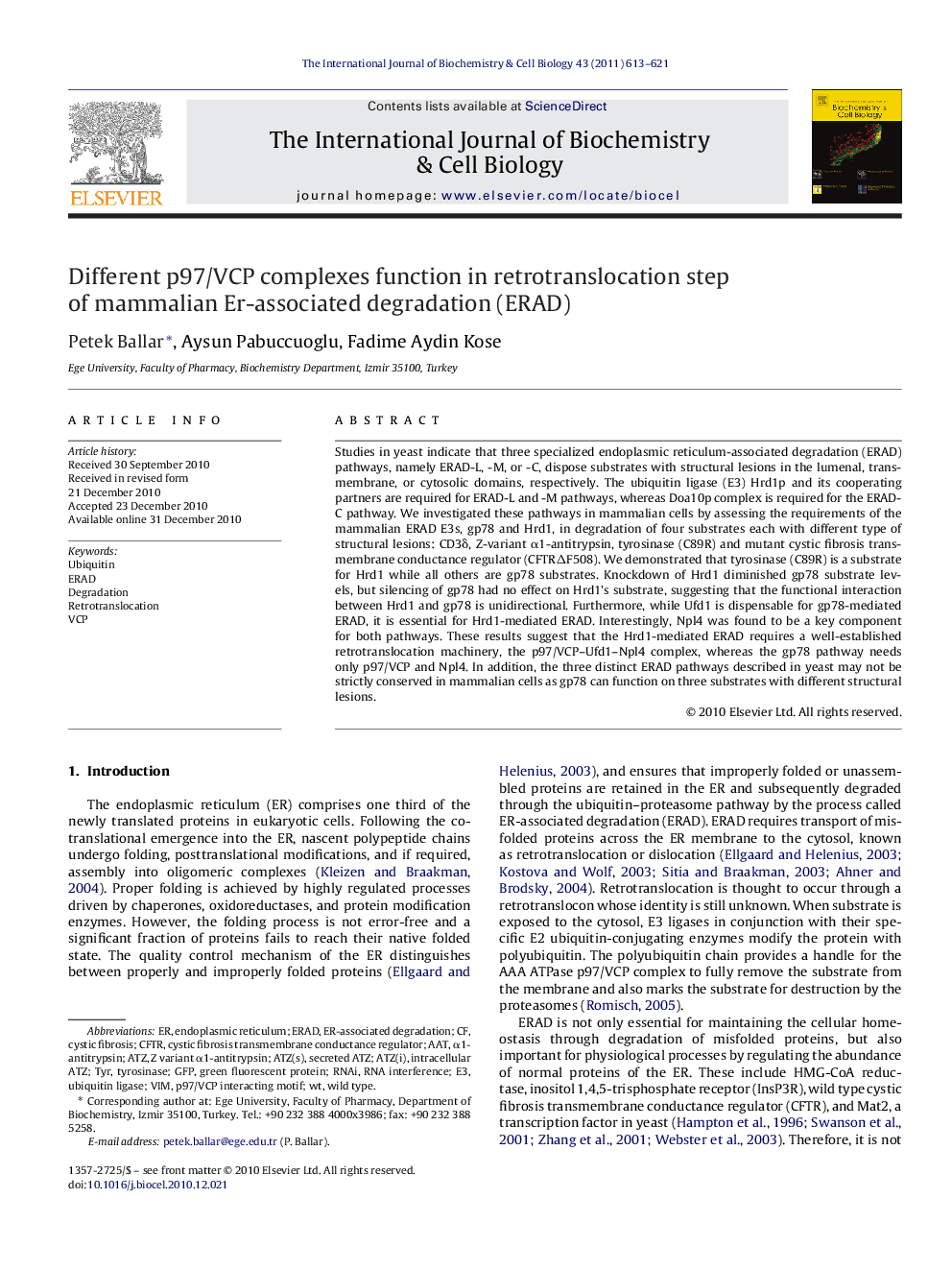| کد مقاله | کد نشریه | سال انتشار | مقاله انگلیسی | نسخه تمام متن |
|---|---|---|---|---|
| 1984133 | 1539931 | 2011 | 9 صفحه PDF | دانلود رایگان |

Studies in yeast indicate that three specialized endoplasmic reticulum-associated degradation (ERAD) pathways, namely ERAD-L, -M, or -C, dispose substrates with structural lesions in the lumenal, transmembrane, or cytosolic domains, respectively. The ubiquitin ligase (E3) Hrd1p and its cooperating partners are required for ERAD-L and -M pathways, whereas Doa10p complex is required for the ERAD-C pathway. We investigated these pathways in mammalian cells by assessing the requirements of the mammalian ERAD E3s, gp78 and Hrd1, in degradation of four substrates each with different type of structural lesions: CD3δ, Z-variant α1-antitrypsin, tyrosinase (C89R) and mutant cystic fibrosis transmembrane conductance regulator (CFTRΔF508). We demonstrated that tyrosinase (C89R) is a substrate for Hrd1 while all others are gp78 substrates. Knockdown of Hrd1 diminished gp78 substrate levels, but silencing of gp78 had no effect on Hrd1's substrate, suggesting that the functional interaction between Hrd1 and gp78 is unidirectional. Furthermore, while Ufd1 is dispensable for gp78-mediated ERAD, it is essential for Hrd1-mediated ERAD. Interestingly, Npl4 was found to be a key component for both pathways. These results suggest that the Hrd1-mediated ERAD requires a well-established retrotranslocation machinery, the p97/VCP–Ufd1–Npl4 complex, whereas the gp78 pathway needs only p97/VCP and Npl4. In addition, the three distinct ERAD pathways described in yeast may not be strictly conserved in mammalian cells as gp78 can function on three substrates with different structural lesions.
Journal: The International Journal of Biochemistry & Cell Biology - Volume 43, Issue 4, April 2011, Pages 613–621